#healthtech
Link
Tumors that affect the central nervous system are among the most fatal kinds of cancer, especially in pediatric cases. Surgical removal of the tumor is usually the prescribed course of action, made harder by the fact that the surgeons performing the procedure will not be able to determine the kind of tumor they’re dealing with beforehand, limiting their ability to come up with a plan in advance. A new tool utilizing neural networks seeks to improve the landscape of cancer diagnostics by providing a rapid and accurate mechanism to classify CNS tumors in an intraoperative setting.
Primary treatments for tumors of the nervous system usually involve the excision of the tumor through surgery, this is a difficult procedure to perform, requiring surgeons to make decisions regarding how much of it can be excised without posing a threat to the neural system and increasing the chances of comorbidity.
The determination of the kind of tumor is crucial to be able to identify the necessity and amount of resection that can be feasibly carried out. Certain tumors are presently viewed as being incurable, hence, the surgeon’s aim while operating on a patient must be to acquire tissue samples for proper diagnosis while preserving the patient’s quality of life as much as possible. However, it may be beneficial to attempt a complete resection as possible for other kinds of tumors, as it improves survival.
Continue Reading
65 notes
·
View notes
Text
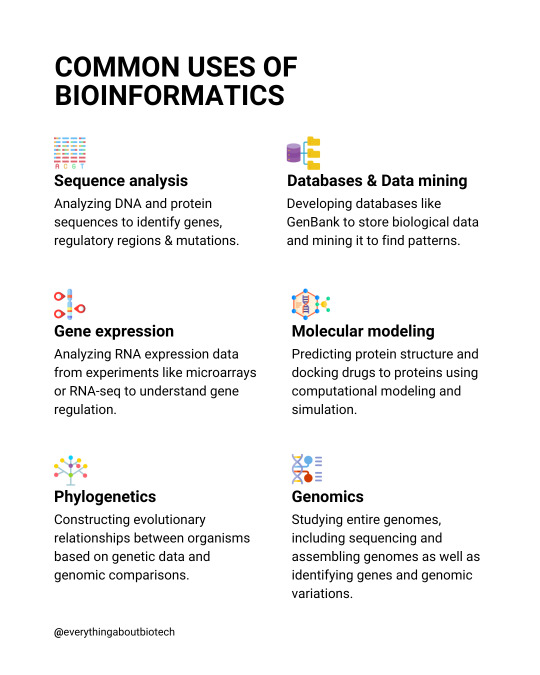
Common uses of bioinformatics
💡Sequence analysis
Analyzing DNA and protein sequences to identify genes, regulatory regions & mutations.
💡Gene expression
Analyzing RNA expression data from experiments like microarrays or RNA-seq to understand gene regulation.
💡Phylogenetics
Constructing evolutionary relationships between organisms based on genetic data and genomic comparisons.
💡Molecular modeling
Predicting protein structure and docking drugs to proteins using computational modeling and simulation.
💡Databases & Data mining
Developing databases like GenBank to store biological data and mining it to find patterns.
💡Genomics
Studying entire genomes, including sequencing and assembling genomes as well as identifying genes and genomic variations.
Follow @everythingaboutbiotech for useful posts.
#bioinformatics#genomics#proteomics#sequencing#PCR#biodata#bioIT#precisionmedicine#digitalhealth#biotech#DNA#healthtech#medtech#biostatistics#bioinformaticsjobs#BLAST#microarray#GenBank
34 notes
·
View notes
Text
The Disruptive Potential of Cryptocurrency, Blockchain, and DLT
Cryptocurrency, blockchain, and Distributed Ledger Technology (DLT) have been disrupting industries and challenging traditional business models since their inception. These technologies have the potential to revolutionize the way we do business, interact with each other, and even govern ourselves. In this blog post, we will explore the disruptive potential of cryptocurrency, blockchain, and DLT.
Cryptocurrency
Cryptocurrency, such as Bitcoin and Ethereum, is a decentralized digital currency that uses cryptography to secure transactions and control the creation of new units. Cryptocurrency has the potential to disrupt traditional financial systems by providing a more secure and transparent way to transfer value. Cryptocurrency eliminates the need for intermediaries, such as banks, and can help reduce transaction fees and increase financial inclusion.
Blockchain
Blockchain is a distributed ledger that records transactions in a secure and transparent way. Each block in the chain contains a cryptographic hash of the previous block, creating an immutable record of all transactions on the network. Blockchain has the potential to disrupt a wide range of industries, including finance, healthcare, and supply chain management. Blockchain can help increase transparency, reduce fraud, and improve efficiency.
Distributed Ledger Technology (DLT)
DLT is a type of database that is distributed across a network of computers. Each computer in the network has a copy of the database, and any changes to the database are recorded in a transparent and immutable way. DLT has the potential to disrupt a wide range of industries, including finance, healthcare, and government. DLT can help increase transparency, reduce fraud, and improve efficiency.
Disruptive Potential
The disruptive potential of cryptocurrency, blockchain, and DLT is significant. Here are some of the ways that these technologies could disrupt traditional industries:
Finance
Cryptocurrency and blockchain have the potential to disrupt traditional financial systems by providing a more secure and transparent way to transfer value. Cryptocurrency eliminates the need for intermediaries, such as banks, and can help reduce transaction fees and increase financial inclusion. Blockchain can also help reduce fraud and increase transparency in financial transactions.
Healthcare
Blockchain and DLT have the potential to disrupt the healthcare industry by providing a more secure and transparent way to store and share patient data. Blockchain can help increase patient privacy and reduce the risk of data breaches. DLT can also help improve the efficiency of healthcare systems by reducing administrative costs and improving supply chain management.
Government
DLT has the potential to disrupt traditional government systems by providing a more secure and transparent way to store and share data. DLT can help increase transparency and reduce fraud in government transactions. DLT can also help improve the efficiency of government systems by reducing administrative costs and improving data management.
Conclusion
Cryptocurrency, blockchain, and DLT have the potential to disrupt traditional industries and revolutionize the way we do business, interact with each other, and even govern ourselves. These technologies offer a more secure and transparent way to transfer value, store and share data, and reduce fraud. As these technologies continue to evolve, we can expect to see more innovative solutions emerge that have the potential to disrupt traditional industries even further.
#Cryptocurrency#blockchain#DLT#disruption#finance#fintech#Cryptocurrencies#BlockchainTechnology#DistributedLedgerTechnology#FutureOfFinance#DigitalCurrency#FinancialInclusion#Healthcare#HealthTech#blockchaininhealthcare#patientdata#government#govtech#blockchainingovernment#transparency#innovation#technologydisruption#revolutionizingindustries
43 notes
·
View notes
Text
Embracing the Digital Wave: A Day in My Life with Smart Technology
Welcome to my digital domain, where every day is powered by the seamless integration of smart technology into my life. From the moment I wake up to the minute I drift off to sleep, modern digital marvels accompany me, making every task more efficient, enjoyable, and connected. Join me as I take you through a typical day in my tech-infused world.
Morning Routine:
As the soft glow of dawn filters through my window, my day begins with the gentle chirp of my smart alarm clock. With just a voice command, it not only wakes me up but also provides me with a personalized weather forecast and updates on my schedule for the day.
After a refreshing shower, I head to the kitchen where my smart coffee maker awaits. With a tap on my smartphone, I start brewing my favorite blend of coffee, perfectly tailored to my taste preferences. While I wait, I catch up on the latest news using my tablet, staying informed about current events from around the globe.

Workday Efficiency:
As I settle into my home office, my laptop powers up, ready to tackle the day's tasks. With cloud-based productivity tools like Google Workspace, collaboration with colleagues is seamless, whether they're across the hall or across the world. Throughout the day, I rely on project management apps like Trello to keep track of deadlines and milestones, ensuring that nothing slips through the cracks.
During virtual meetings, my noise-canceling headphones ensure crystal-clear audio, while my webcam delivers high-definition video, making it feel as though we're all in the same room. With the click of a button, I can easily share my screen, presentations, or documents, facilitating smooth communication and decision-making.
Fitness and Well-being:
After a productive morning, it's time to focus on my well-being. I slip on my fitness tracker, which monitors everything from my heart rate to my sleep patterns, providing valuable insights into my overall health. Whether I'm going for a run around the neighborhood or following a yoga session at home, my smartwatch keeps me motivated with real-time feedback and personalized coaching.
Entertainment and Relaxation:
As evening approaches, it's time to unwind and indulge in some entertainment. With a few voice commands, my smart TV springs to life, ready to stream my favorite shows and movies from a variety of platforms. Whether it's a gripping drama, a laugh-out-loud comedy, or a thrilling documentary, there's always something to suit my mood.
When it's time to hit the hay, my smart home comes to life once again, adjusting the lighting and temperature to create the perfect sleep environment. As I drift off to sleep, I reflect on the day's events, grateful for the convenience and comfort that technology has brought into my life.

#SmartTechnology#DigitalLife#ConnectedLiving#TechIntegration#SmartHome#ProductivityTools#HealthTech#EntertainmentTech#LifestyleTech#FutureTech
2 notes
·
View notes
Text
Benefits of Fellowship Courses after MBBS for Doctors
Fellowship Programs in India are turning out to be the game changers for doctors when it comes to skill enhancement and gaining a competitive edge in their careers
The benefits of these programs are manifold. Doctors who complete fellowship courses, gain a competitive edge in their careers. They have the opportunity to work with esteemed medical professionals, stay updated with the latest research, and are better positioned for career advancement. This not only benefits the doctors themselves but also raises the overall standard of healthcare in India.
By enhancing and upgrading their skills, doctors can offer superior patient care and contribute significantly to the healthcare landscape in India, ultimately improving the lives of countless individuals.

2 notes
·
View notes
Text
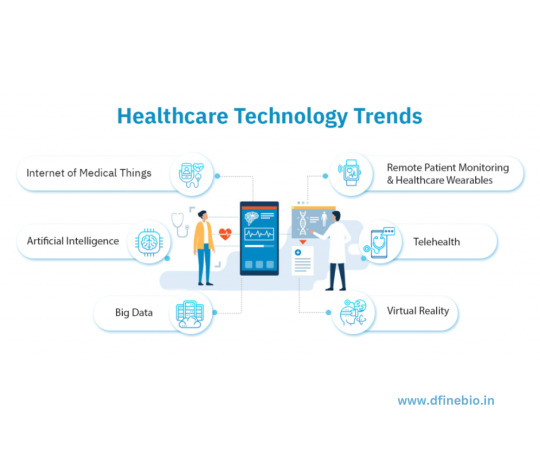
The future of healthcare with the latest tech trends! 💡 From AI-driven diagnostics to telehealth innovations, the healthcare landscape is evolving. 🚀 Stay tuned as we explore the cutting-edge technologies shaping a healthier tomorrow. 🏥
2 notes
·
View notes
Text
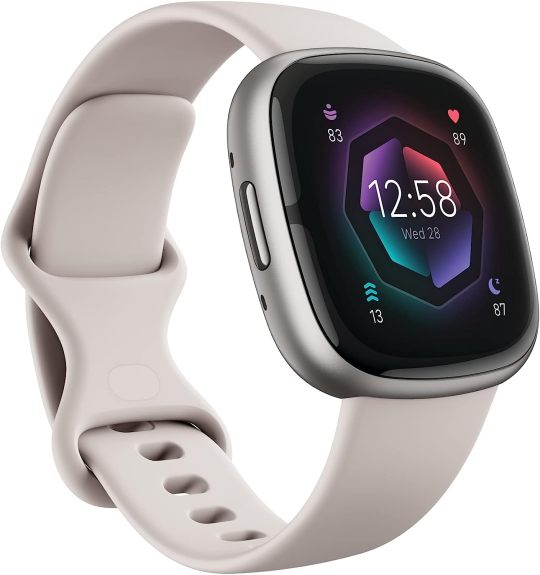
Unveiling Precision: Google Pixel Watch 2 and Fitbit Charge 6 Redefine Heart Rate Tracking
In the ever-evolving landscape of smartwatches and fitness trackers, the Google Pixel Watch 2 and Fitbit Charge 6 emerge as pioneers, showcasing the pinnacle of heart rate tracking technology. As we delve into the intricacies of these devices, it becomes evident that they are not just wearables; they are sophisticated health companions.
The Foundation: Advanced Sensors
Contrary to the common misconception of heart rate tracking relying on pulse vibrations, the technology embedded in both devices surpasses expectations. The introduction of PPG sensors (photoplethysmography) marks a paradigm shift. By utilizing green LED light, these sensors measure blood circulation's volume and movement, providing a more nuanced understanding of heart rate.
The Google Pixel Watch 2 takes it a step further with its multi-path LED sensor, covering more skin surface area. This enhancement ensures more accurate recordings, especially during dynamic activities like High-Intensity Interval Training (HIIT). The struggle against the nemesis of heart-rate tracking—motion—is met head-on, resulting in a remarkable 40% improvement in accuracy during vigorous exercises.
Illuminating the Path: Lights and Modes
The devices offer versatility in tracking modes. While passive all-day tracking optimizes battery life, the exercise mode illuminates all sensor lights, ensuring comprehensive data capture during intense workouts. It's a balancing act between efficiency and functionality, tailored to the user's needs.
Harnessing the Power of AI
A true game-changer lies in the integration of Artificial Intelligence (AI). The Pixel Watch 2 introduces an enhanced algorithm, a testament to the symbiosis of technology and health. These devices go beyond merely capturing heart rate data; they process it through advanced AI algorithms. The Charge 6, despite being a fitness tracker, inherits these algorithmic advancements, delivering a seven-day battery life while managing the added computational load.
Evolution Through Testing
The journey to perfection involves relentless testing. The development team's commitment is evident in their rigorous testing methods. From running on the beach to simulate unpredictable movements to accounting for diverse factors like skin tone, age, gender, and environmental conditions, the algorithms are refined to offer not just data but high-quality, reliable insights.
Beyond Numbers: Daily Readiness Score
It's not just about heart rate data; it's about actionable insights. The culmination of advanced HR sensors and AI-led algorithms births the Daily Readiness Score. Whether signaling readiness for a strenuous workout, indicating the need for rest, or suggesting a gentle push, these devices empower users to tailor their fitness journey.
A Healthier Tomorrow
In essence, the Google Pixel Watch 2 and Fitbit Charge 6 transcend the conventional boundaries of wearables. They are not just watches and trackers; they are health partners equipped with cutting-edge technology. The meticulous fusion of sensors, lights, AI, and continuous testing reaffirms their commitment to delivering accurate, meaningful data.
As we embrace these advancements, we not only monitor our heartbeats but embark on a journey toward a healthier and more informed lifestyle.

Learn More
#Smartwatch#WearableTech#PixelWatch2#HealthTech#WearableInnovation#Review#AIAlgorithms#FitTech#TechInnovations#Fitbit#GooglePixel#HealthTracking#HeartRateSensors#TechReview#Gadget
2 notes
·
View notes
Text
Atlas of human brain blood vessels highlights changes in Alzheimer’s disease

Atlas of human brain blood vessels highlights changes in Alzheimer’s disease
MIT researchers characterize gene expression patterns for 22,500 brain vascular cells across 428 donors, revealing insights for Alzheimer’s onset and potential treatments.
Your brain is powered by 400 miles of blood vessels that provide nutrients, clear out waste products, and form a tight protective barrier — the blood-brain barrier — that controls which molecules can enter or exit. However, it has remained unclear how these brain vascular cells change between brain regions, or in Alzheimer’s disease, at single-cell resolution.
To address this challenge, a team of scientists from MIT’s Computer Science and Artificial Intelligence Laboratory (CSAIL), The Picower Institute for Learning and Memory, and The Broad Institute of MIT and Harvard recently unveiled a systematic molecular atlas of human brain vasculature and its changes in Alzheimer’s disease (AD) across six brain regions, in a paper published June 1 in Nature Neuroscience.
Alzheimer's disease is a leading cause of death, affects one in nine Americans over 65, and leads to debilitating and devastating cognitive decline. Impaired blood-brain barrier (BBB) function has long been associated with Alzheimer’s and other neurodegenerative diseases, such as Parkinson's and multiple sclerosis. However, the molecular and cellular underpinnings of BBB dysregulation remain ill-defined, particularly at single-cell resolution across multiple brain regions and many donors.
Navigating vascular complexity
Embarking deep into the complexities of our gray matter, the researchers created a molecular atlas of human brain vasculature across 428 donors, including 220 diagnosed with Alzheimer's and 208 controls. They characterized over 22,514 vascular cells from six different brain regions, measuring the expression of thousands of genes for each cell. The resulting datasets unveiled intriguing changes in gene expression across different brain regions and stark contrasts between individuals afflicted with AD and those without.
“Alzheimer's therapy development faces a significant hurdle — brain alterations commence decades before cognitive signs make their debut, at which point it might already be too late to intervene effectively,” comments MIT CSAIL principal investigator and electrical engineering and computer science (EECS) Professor Manolis Kellis. “Our work charts the terrain of vascular changes, one of the earliest markers of Alzheimer's, across multiple brain regions, providing a map to guide biological and therapeutic investigations earlier in disease progression.”
Kellis is the study's co-senior author, along with MIT Professor Li-Huei Tsai, director of the Picower Institute and the Picower Professor in the Department of Brain and Cognitive Sciences.
The little cells that could
The threads of our human brain vasculature, and every part of our brain and body, are composed of millions of cells, all sharing the same DNA code, but each expressing a different subset of genes, which define its functional roles and distinct cell type. Using the distinct gene expression signatures of different cerebrovascular cells, the researchers distinguished 11 types of vascular cells.
These included endothelial cells that line the interior surface of blood vessels and control which substances pass through the BBB, pericytes that wrap around small vessels and provide structural support and blood flow control, smooth muscle cells that form the middle layer of large vessels and whose contraction and relaxation regulates blood flow and pressure, fibroblasts that surround blood vessels and hold them in place, and they distinguished arteriole, venule, and capillary veins responsible for the different stages of blood oxygen exchange.
The abundance of these vascular cell types differed between brain regions, with neocortical regions showing more capillary endothelial cells and fewer fibroblasts than subcortical regions, highlighting the regional heterogeneity of the BBB.
Clues and suspects
Armed with these annotations, the next phase was studying how each of these cell types change in AD, revealing 2,676 genes whose expression levels change significantly. They found that capillary endothelial cells, responsible for transport, waste removal, and immune surveillance, showed the most changes in AD, including genes involved in clearance of amyloid beta, one of the pathological hallmarks of AD, providing insights on the potential mechanistic implications of vascular dysregulation on AD pathology.
Other dysregulated processes included immune function, glucose homeostasis, and extracellular matrix organization, which were all shared among multiple vascular cell types, and also cell-type-specific changes, including growth factor receptors in pericytes, and transporter and energy in endothelial cells, and cellular response to amyloid beta in smooth muscle cells. Regulation of insulin sensing and glucose homeostasis in particular suggested important connections between lipid transport and Alzheimer’s regulated by the vasculature and blood-brain-barrier cells, which could hold promise for new therapeutic clues.
“Single-cell RNA sequencing provides an extraordinary microscope to peer into the intricate machinery of life, and ‘see’ millions of RNA molecules bustling with activity within each cell,” says Kellis, who is also a member of the Broad Institute. “This level of detail was inconceivable just a few years ago, and the resulting insights can be transformative to comprehend and combat complex psychiatric and neurodegenerative disease."
Maestros of dysregulation
Genes do not act on a whim, and they do not act alone. Cellular processes are governed by a complex cast of regulators, or transcription factors, that dictate which groups of genes should be turned on or off in different conditions, and in different cell types. These regulators are responsible for interpreting our genome, the ‘book of life,’ and turning it into the myriad of distinct cell types in our bodies and in our brains. These regulators might be responsible when something goes wrong, and they could also be critical in fixing things and restoring healthy cellular states.
With thousands of genes showing altered expression levels in Alzheimer’s disease, the researchers then sought to find the potential masterminds behind these changes. They asked if common regulatory control proteins target numerous altered genes, which may provide candidate therapeutic targets to restore the expression levels of large numbers of target genes. Indeed, they found several such ‘master controllers,’ involved in regulating endothelial differentiation, inflammatory response, and epigenetic state, providing potential intervention points for drug targets against AD.
Cellular murmurings
Cells do not function in isolation; rather, they rely on communication with each other to coordinate biological processes. This intercellular communication is particularly complex within the cellular diversity of the brain, given the many factors involved in sensing, memory formation, knowledge integration, and consciousness. In particular, vascular cells have intricate interactions with neurons, microglia, and other brain cells, which take on heightened significance during pathological events, such as in Alzheimer's disease, where dysregulation of this cellular communication can contribute to the progression of the disease.
The researchers found that interactions from capillary endothelial cells to neurons, microglia, and astrocytes were highly increased in AD, while interactions in the reverse direction, from neurons and astrocytes to capillary endothelial cells, were decreased in AD. This asymmetry could provide important cues for potential interventions targeting the vasculature and specifically capillary endothelial cells, with ultimate broad positive impacts on the brain.
“The dynamics of vascular cell interactions in AD provide an entry point for brain interventions and potential new therapies,” says Na Sun, an EECS graduate student and MIT CSAIL affiliate and first author on the study. “As the blood-brain barrier prevents many drugs from influencing the brain, perhaps we could instead manipulate the blood-brain barrier itself, and let it spread beneficiary signals to the rest of the brain. Our work provides a blueprint for cerebrovasculature interventions in Alzheimer's disease, by unraveling how cellular communication can mediate the impact of genetic variants in AD."
Going off script: genetic plot twists
Disease onset in our bodies (and in our brains) is shaped by a combination of genetic predispositions and environmental exposures. On the genetic level, most complex traits are shaped by hundreds of minuscule sequence alterations, known as single-nucleotide polymorphisms (or SNPs, pronounced snips), most of which act through subtle changes in gene expression levels.
No matter how subtle their effects might be, these genetic changes can reveal causal contributors to disease, which can greatly increase the chance of therapeutic success for genetically-supported target genes, compared to targets lacking genetic support.
To understand how genetic differences associated with Alzheimer’s might act in the vasculature, the researchers then sought to connect genes that showed altered expression in Alzheimer’s with genetic regions associated with increased Alzheimer’s risk through genetic studies of thousands of individuals. They linked the genetic variants (SNPs) to candidate target genes using three lines of evidence: physical proximity in the three-dimensional folded genome, genetic variants that affect gene expression, and correlated activity between distant regulatory regions and target genes that go on and off together between different conditions.
This resulted in not just one hit, but 125 genetic regions, where Alzheimer’s-associated genetic variants were linked to genes with disrupted expression patterns in Alzheimer’s disease, suggesting they might mediate these causal genetic effects, and thus may be good candidates for therapeutic targeting. Some of these predicted hits were direct, where the genetic variant acted directly on a nearby gene. Others were indirect when the genetic variant instead affected the expression of a regulator, which then affected the expression of its target genes. And yet others were predicted to be indirect through cell-cell communication networks.
ApoE4 and cognitive decline
While most genetic effects are subtle, both in Alzheimer’s and nearly all complex disorders, exceptions do exist. One such exception is FTO in obesity, which increases obesity risk by one standard deviation. Another one is apolipoprotein E (ApoE) in Alzheimer’s disease, where the E4 versus E3 allele increases risk more than 10-fold for carriers of two risk alleles — those who inherited one ‘unlucky’ copy from each parent.
With such a strong effect size, the researchers then asked if ApoE4 carriers showed specific changes in vascular cells that were not found in ApoE3 carriers. Indeed, they found abundance changes associated with the ApoE4 genotype, with capillary endothelial cells and pericytes showing extensive down-regulation of transport genes. This has important implications for potential preventive treatments targeting transport in ApoE4 carriers, especially given the cholesterol transporter roles of ApoE, and the increasingly recognized role of lipid metabolism in Alzheimer’s disease.
"Unearthing these AD-differential genes gives us a glimpse into how they may be implicated in the deterioration or dysfunction of the brain's protective barrier in Alzheimer's patients, shedding light on the molecular and cellular roots of the disease's development," says Kellis. "They also open several avenues for therapeutic development, hinting at a future where these entry points might be harnessed for new Alzheimer's treatments targeting the blood-brain barrier directly. The possibility of slowing or even halting the disease's progression is truly exciting.”
Translating these findings into viable therapeutics will be a journey of exploration, demanding rigorous preclinical and clinical trials. To bring these potential therapies to patients, scientists need to understand how to target the discovered dysregulated genes safely and effectively and determine whether modifying their activity can ameliorate or reverse AD symptoms, which requires extensive collaborations between medical doctors and engineers across both academia and industry.
“This is a tour de force impressive case series,” says Elizabeth Head, vice chair for pathology research and pathology professor at the University of California at Irvine, who was not involved in the research. “A novel aspect of this study was also the methodological approach, which left the vasculature intact, as compared to previous work where blood vessel enrichment protocol was applied. Manolis Kellis and his colleagues show clear evidence of neurovascular unit dysregulation in AD and it is exciting to see known and novel pathways being identified that will accelerate discoveries at the protein level. Many DEGs associated with AD are linked to lipid/cholesterol metabolism, to AD genetic risk factors (including ApoE) and inflammation. The potential for the ApoE genotype in mediating cerebrovascular function will also lead to possible new mouse models that will capture the human phenotype more closely with respect to the vascular contributions to dementia in humans. The regional differences in DEGs are fascinating and will guide future neuropathology studies in the human brain and drive novel hypotheses.”
"The predominant focus in AD research over the past 10 years has been on studying microglia, the resident macrophage-like cells of the brain,” adds Ryan Corces, an assistant professor of neurology at the University of California at San Francisco who was also not involved in the work. “While microglia certainly play a key role in disease pathogenesis, it has become increasingly clear through studies such as this one that vascular cells may also be critically involved in the disease. From blood-brain barrier leakage to an enhanced need for debris clearance, the vascular cells of the brain play an important part in this complex disease. This study, and others like it, have begun picking apart the underlying molecular changes that occur in vascular cells, showing which genes appear dysregulated and how those changes may interact to alter vascular cell functions. Together with the mounting evidence of vascular involvement in AD, this work provides an important foundation for guiding therapeutic interventions against blood-brain barrier dysfunction in AD, especially during the preclinical or prodromal stages of the disease, where the blood-brain barrier may be playing a central role.”
Sun, Kellis, and Tsai wrote the paper alongside Leyla Anne Akay, Mitchell H. Murdock, Yongjin Park, Fabiola Galiana-Melendez, Adele Bubnys, Kyriaki Galani, Hansruedi Mathys, Xueqiao Jiang, and Ayesha P. Ng of MIT and David A. Bennett of the Rush Alzheimer’s Disease Center in Chicago. This work was supported, in part, by National Institutes of Health grants, the Cure Alzheimer’s Foundation CIRCUITS consortium, the JPB Foundation, Robert A. and Renee Belfer, and a Takeda Fellowship from the Takeda Pharmaceutical Company.
Source: MIT
Read the full article
3 notes
·
View notes
Text
🌟🚀 Tech-Health Revolution: The Future is Here! 🚀🌟 Hey, beautiful people! 🌈💕 🏥💻 From telemedicine to AI diagnostics, wearable health devices to robotic surgery, we're witnessing a tech-health revolution that's making healthcare more accessible, efficient, and personalized! 🤖🔬💉
Join us as we dive into 10 surprising ways technology is reshaping the healthcare landscape and paving the way for a brighter, healthier future for all! 🌟💖🌐
4 notes
·
View notes
Text


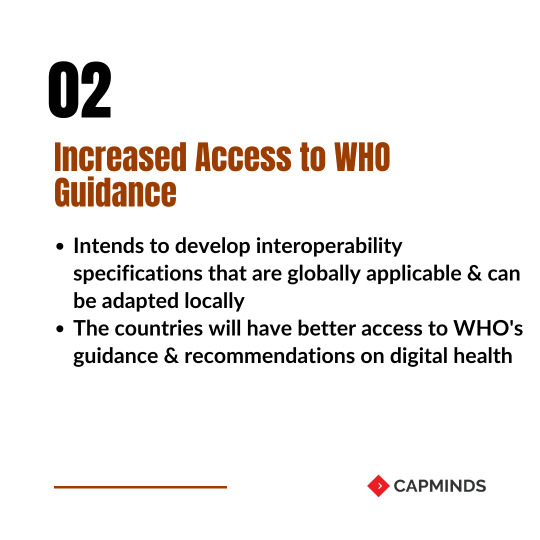

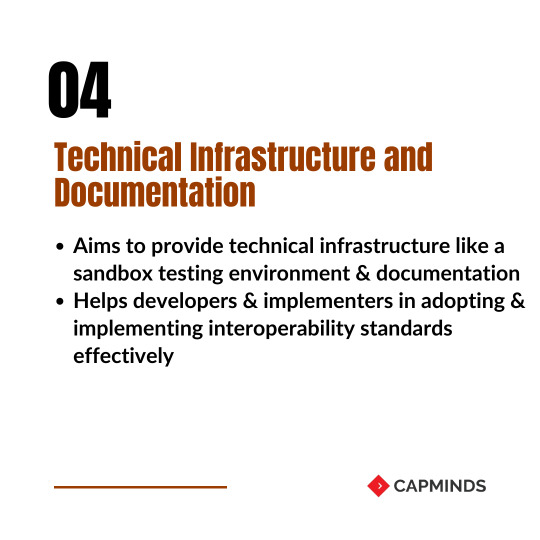
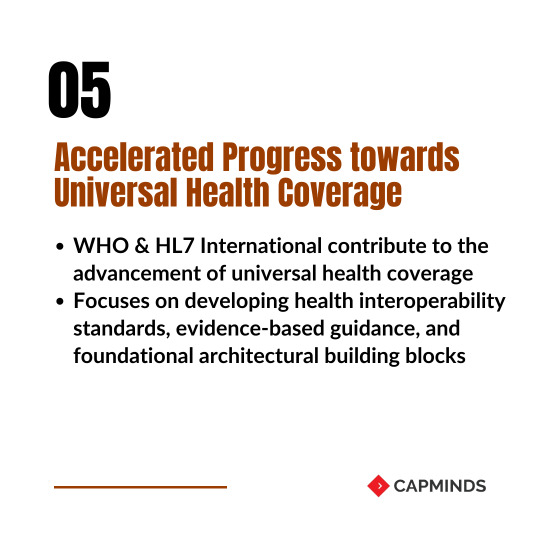
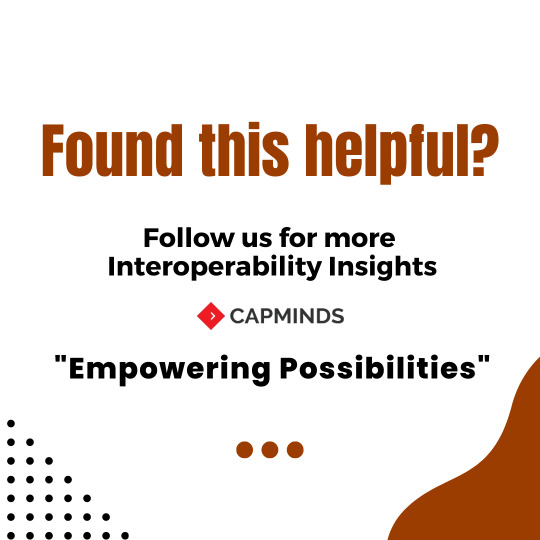
The collaboration between WHO and HL7 International brings together their respective expertise and resources to drive the adoption and appropriate use of interoperability standards globally.
This collaboration has the potential to harmonize digital health systems, improve data exchange and continuity of care, and contribute to the overall goal of achieving universal health coverage.
2 notes
·
View notes
Link
A group of researchers affiliated with Oxford University, UK, have developed a prognostic model backed by the most extensive information set spanning a national, population-representative, and linked electronic healthcare record data set of over 11·6 million female individuals of 20–90 years of age for clinical prediction of females who are at high risk of developing breast cancer as well as the likelihood of consequent mortality in a decade without breast cancer at baseline. This unprecedented and pioneering regression and machine learning modeling study concerning females without breast cancer at baseline aspires to encourage informed stratified screening or chemoprevention strategies and additional clinical intervention towards those individuals with a grave contingency of breast cancer associated with a higher mortality risk in 10 years, as distinct from basing clinical decisions solely on the risk of breast cancer diagnosis.
Although breast cancer is life-threatening, with the increase in awareness, improved screening strategies, and treatment opportunities over recent decades, many countries have witnessed optimistic outcomes in patient survival. Detection of individualistic risk proneness would additionally aid in reducing the mortality rate emanating from breast cancer malignancy.
Crucially, prevention strategies structured around risk-stratified early detection do not always correspond to the likelihood of dying of breast cancer. Such foretold likelihood of cancer incidence leads to ineffective chemoprevention approaches and overdiagnosis, rendering unnecessary torments to the individual’s health and an accompanying financial burden.
Continue Reading
46 notes
·
View notes
Text

LIGE 2022 New Smart Watch. The Ultimate Combination of Style and Functionality.
Original price : USD 73.30
Now price : USD 21.99
Featured brands | Shipped within 72 hrs.
Check the Link for more info : https://s.click.aliexpress.com/e/_DkvHH4V
The LIGE 2022 New Smart Watch is a revolutionary device that combines the functionality of a traditional watch with the capabilities of a smartwatch.
It boasts a high-resolution touchscreen display, multiple sports modes, heart rate and blood pressure monitoring, sleep tracking, SMS and call alerts, and much more.
With its sleek and stylish design, it's the perfect accessory for any occasion.
#LIGEsmartwatch#LIGE2022#smartwatch#wearabletech#techaccessories#fitnesswatch#healthtech#smartfitness#smartlife#productivity#fashiontech
2 notes
·
View notes
Photo

Our larger screen interactive voice-based solution with a 3D virtual interactive avatar was designed to inspire increased patient buy-in and participation in their own care. Addison is configured to encourage lasting behavioral change.
2 notes
·
View notes
Text
Explore your choice...
The statement “Health is Wealth” is a Nice and Wonderful statement that illustrates the value of health benefits of human body. Every human body consists of so many nerves, muscles, bones and organs associated with continuous flow of blood…
If a person had healthy body, then he/she will enjoy pleasures and joy in every aspect of life. A healthy body will give physical pleasures and internal joy that will lead to a peaceful mind and joyful soul…
Read more...
#Healthcare#HealthTech#HealthcareTechnology#MedicalInnovation#DigitalHealth#HealthcareIndustry#HealthcareSolutions#HealthcareIT#HealthcareServices#HealthcareManagement#HealthcareProviders#HealthcareSystems#HealthcareLeadership#MPMTechnologies#MPMTech#HealthcareSoftware#MedicalDevices#HealthcareAnalytics#HealthcareAutomation#Telehealth#medicare#telehealth
2 notes
·
View notes
Link
HIPAA (Health Insurance Portability and Accountability Act) is a federal law enacted in 1996 that sets standards for protecting sensitive patient data. The law regulates how healthcare providers, insurance companies, and other healthcare organizations handle patient information. #HIPAA covers a broad range of areas, including privacy, security, and breach notification.
#hipaacompliance#healthcareprivacy#patienttrust#security#healthtech#compliance#datasecurity#medicalrecords#privacy protection#trustedorganizations
2 notes
·
View notes
Photo

हेल्थ और ब्यूटी से जुड़ी जानकारी के लिए फॉलो करें ❤️ @ayuayurvedicc @ayuayurvedicc @ayuayurvedicc @ayuayurvedicc . . . . Attention: The information provided on this post and its content is for general purpose only and should not be considered as professional advice ✓ . . . . #healthkhabarchee #healthtips #healthtip #healthty #healthtalk #healthtech #healthtipsoftheday #healthtourism #healthtipoftheday #healthtips4life #healthtransformation #healthtechnology #healthtipsforwomen #healthtipsdaily #healthtipsinhindi #healthtips https://www.instagram.com/p/CmodN5BpKQ7/?igshid=NGJjMDIxMWI=
#healthkhabarchee#healthtips#healthtip#healthty#healthtalk#healthtech#healthtipsoftheday#healthtourism#healthtipoftheday#healthtips4life#healthtransformation#healthtechnology#healthtipsforwomen#healthtipsdaily#healthtipsinhindi
2 notes
·
View notes